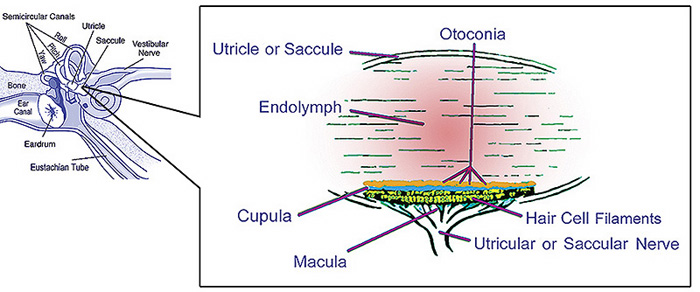What is BPPV and What Can I Do About It?

Tid Bits of Info
- If you have episodes of dizziness or your head feels like it is spinning, seek advice from a healthcare professional that has knowledge of BPPV.
- If your symptoms don’t abate quickly, consider going to the ER.
- If you have fallen for no apparent reason, tell your doctors and they will check you for BPPV.
- Abnormal eye movement (Nystagmus) almost always coincides with the onset of the symptoms of BPPV.
- Specially trained Physical Therapists can help reduce and resolve your symptoms. They will educate you on things to do to avoid exacerbating the symptoms.
Have you ever felt dizzy for no apparent reason? If you regularly suffer from sudden short episodes of intense dizziness, you may be suffering from Benign Paroxysmal Positional Vertigo (BPPV). This condition is treatable through physical therapy.
BPPV usually affects people over 60 (the most commonly affected people are over 75 years old). After moving their head, persons impacted may feel like they are spinning or that the room is spinning: an experience known as Vertigo. Specially trained Physical Therapists can help to stabilize and reduce the symptoms of Vertigo in many instances by utilizing a series of head movements.
Symptoms of BPPV (Vertigo)
Common symptoms of Vertigo include:
- A spinning sensation in one’s head that can lead to a loss of balance and increases the possibility of a fall.
- Being lightheaded.
- Loss of balance.
- Blurred vision.
- Nausea and vomiting.
These symptoms are usually fleeting and tend to last for a minute or two. They usually are not constant and the frequency of the symptoms can change with daily and environmental events. The symptoms may appear for a variety of reasons, but changing the head position is almost always associated with the development of the symptoms.
What is BPPV?
BPPV can be traced back to anatomical changes in the inner ear. The outer portion of your ear is designed to capture sound wave so that you can hear, while the inner ear has different parts that are partly responsible for maintaining your balance. The inner ear has Semicircular Canals that contain fluid and fine hair-like sensors that control the rotation of the head.
The Otolith organ monitors movements of the head and response to gravity. The Otolith Organ has two components, the Utricle and Saccule, and these contain crystals that are responsible for a person’s sensitivity to gravity. At times and for numerous reasons, these crystals can be dislodged and end up in the Semicircular Canals. The crystals in the Semicircular Canal can cause the canals to have a false sense of head motion, which leads to you feeling dizzy or spinning sensation known as Vertigo.
Causes of BBPV
The causes of BPPV are numerous, but there is not one succinct activity or event that has been linked to it directly. Head trauma, inner ear infection or blood flow issues have been shown to exacerbate or initiate the symptoms of vertigo. Individuals with other vestibular disorders usually suffer from BBPV. This condition commonly impacts the elderly. Over 50 percent of the people above 75 years old suffer from the effects of BPPV.
Treatment of BBPV
A formal physical evaluation by a doctor or physical therapist can diagnose this condition and lead to treatment. People suffering from BPPV may experience symptoms for a long time before being diagnosed and treated. A specially trained Physical Therapist, Neurologist or other medical professional that has been trained in diagnosing BPPV will be able to direct your care.
In many cases the specifically trained healthcare professional will perform treatment involving specific movements of the head. Treatment is performed slowly, moving the head in different positions for a period of time. The purpose of the movements is to remove the dislodged crystals from the Semicircular Canals and have them “travel” back into the Otilith Organ. The results are almost immediate and are usually successful approximately 90% of the time.
BPPV is very common and as we age the symptoms become more prominent. Fortunately, when it is properly diagnosed it can be successfully treated and the patient can resume their normal life activities.

























